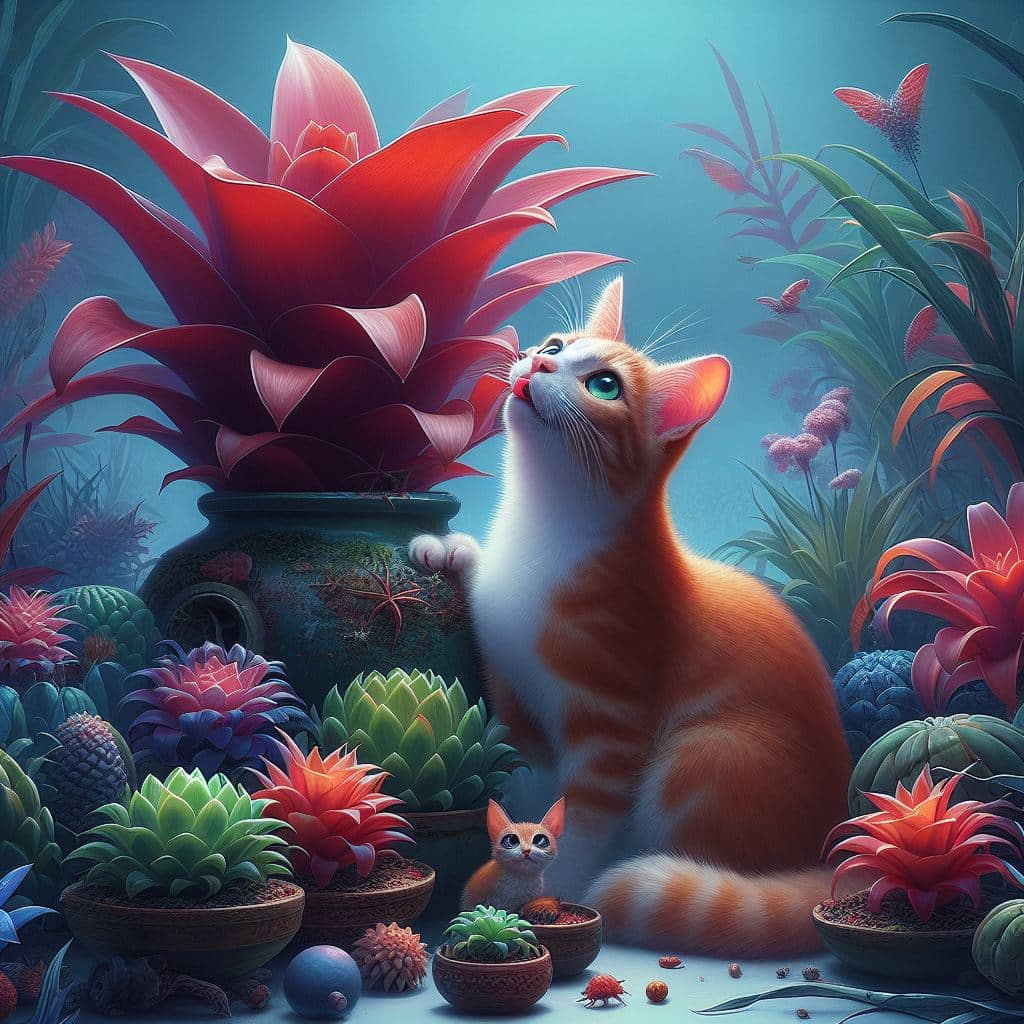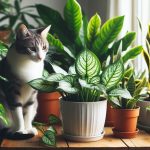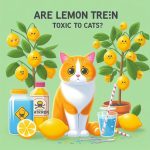Bromeliads are popular houseplants known for their striking appearance and low maintenance. However, pet owners may wonder, “Are bromeliads toxic to cats?” Understanding the potential toxicity of these plants is essential for creating a safe environment for your feline friends. In this blog post, we will explore the characteristics of bromeliads, the potential toxic components they contain, the effects of bromeliad toxicity on cats, common symptoms, treatment, preventive measures, and safe alternative plants for cat-friendly environments. Let’s delve into the fascinating world of plant toxicity and its impact on our beloved pets.
Understanding Bromeliads and Their Characteristics
Bromeliads are a diverse family of plants, known for their vibrant and exotic appearance. These plants are popular for their striking foliage and unique growth habits, making them a common choice for indoor and outdoor decoration. However, it’s essential for cat owners to understand the potential risks that bromeliads may pose to their feline companions.

Characteristics of Bromeliads
- Distinctive Appearance: Bromeliads are characterized by their rosette of leaves that form a central “cup” or “tank” to collect water. This feature makes them visually appealing and a unique addition to any plant collection.
- Variety of Species: With over 3,000 recognized species, bromeliads come in various shapes, sizes, and colors, offering a wide range of options for plant enthusiasts.
- Habitat and Growing Conditions: Bromeliads are native to diverse environments, such as tropical rainforests, deserts, and high-altitude regions. Their ability to thrive in different habitats contributes to their popularity as ornamental plants for both indoor and outdoor settings.
- Low Maintenance: These plants are generally low-maintenance, requiring minimal care and attention to survive and flourish.
- Non-Toxic Components: While bromeliads may contain natural compounds as a defense mechanism against herbivores, it’s essential to determine whether these components pose any risk to cats.
Understanding the unique characteristics of bromeliads is crucial for cat owners to make informed decisions about the safety of these plants in their homes. In the following sections, we will delve deeper into the potential toxic components of bromeliads and the effects of bromeliad toxicity on cats.
Potential Toxic Components in Bromeliads
Bromeliads, like many other plants, contain certain substances that can be potentially harmful to cats if ingested. It’s important for cat owners to be aware of these toxic components to ensure the safety of their pets. Here are the potential toxic components in bromeliads:
Insoluble Calcium Oxalates: Bromeliads, particularly those in the genus Guzmania and Vriesea, contain insoluble calcium oxalate crystals. When these crystals come into contact with a cat’s mouth or gastrointestinal tract, they can cause irritation, burning, and swelling.
Saponins: Some species of bromeliads contain saponins, a type of natural detergent found in various plant species. When ingested by cats, saponins can cause gastrointestinal upset, including vomiting and diarrhea.
Bromelain: While bromelain, an enzyme found in pineapple and certain bromeliads, is known for its anti-inflammatory properties in humans, it can be problematic for cats. Ingestion of bromelain can lead to stomach irritation and discomfort in cats.
It’s important to note that the presence and concentration of these toxic components can vary among different species of bromeliads. Some may pose a higher risk to cats than others.
When determining whether bromeliads are suitable for a cat-friendly household, it’s crucial to understand the potential risks associated with these toxic components and take appropriate precautions to ensure the well-being of feline companions.
Effects of Bromeliad Toxicity on Cats
Bromeliads are popular houseplants known for their colorful and exotic appearance. However, it’s essential to understand the potential effects of bromeliad toxicity on cats to ensure the safety of your feline companions.

Potential Risks
- Irritation: Contact with the sap or juices of bromeliads can cause skin irritation in cats.
- Gastrointestinal Distress: Ingesting parts of the bromeliad plant can lead to vomiting, drooling, and gastrointestinal discomfort in cats.
- Respiratory Issues: Inhalation of the tiny particles or airborne irritants released by bromeliads may result in respiratory distress in sensitive cats.
Severity of Symptoms
- The severity of symptoms may vary depending on the cat’s sensitivity, the amount of plant material ingested, and the specific compounds present in the bromeliad.
- Ingestion of larger quantities or prolonged exposure to the plant may lead to more severe toxic reactions in cats.
Immediate Action
- Consult a Veterinarian: If you suspect that your cat has ingested or come into contact with bromeliads, seek immediate veterinary attention.
- Symptom Observation: Monitor your cat closely for any signs of distress and provide the veterinarian with detailed information about the plant exposure.
Conclusion
Understanding the potential effects of bromeliad toxicity on cats is crucial for creating a safe and pet-friendly environment. By being aware of the risks and promptly addressing any potential issues, you can help ensure the well-being of your feline friends.
In summary, while bromeliads can enhance the aesthetics of your home, it’s important to be cautious and knowledgeable about their potential impact on your cats’ health.
Symptoms of Bromeliad Toxicity in Cats
Bromeliads can pose a risk to cats, and it’s important to be aware of the potential symptoms of toxicity if your feline friend has ingested or come into contact with these plants. Here are some common symptoms to watch for:
- Gastrointestinal Distress: Cats may experience vomiting, diarrhea, or drooling after ingesting bromeliads.
- Loss of Appetite: A decreased interest in food can be a sign of plant-related toxicity.
- Lethargy: Cats may appear unusually tired or lacking in energy.
- Behavioral Changes: Agitation, excessive vocalization, or unusual behavior could indicate a problem.
- Pawing at Mouth: If cats show signs of irritation in the mouth or throat, such as pawing at the mouth or excessive licking, it could be related to plant toxicity.
- Respiratory Symptoms: Wheezing, coughing, or difficulty breathing can occur in severe cases of bromeliad toxicity.
It’s crucial to monitor your cat’s behavior and well-being if you suspect exposure to bromeliads. If any of these symptoms are observed, seeking immediate veterinary care is essential to ensure prompt and appropriate treatment.
Keep in mind that these symptoms can also overlap with other health issues, so it’s important to communicate any concerns with your veterinarian, providing details about the cat’s potential exposure to bromeliads or any other toxic substances.
Remember, early identification and intervention can significantly improve the prognosis for cats affected by bromeliad toxicity.
Treatment for Bromeliad Toxicity in Cats
If you suspect that your cat has ingested a toxic part of a bromeliad plant, it’s crucial to take immediate action to ensure their well-being. Here are the steps to take for treatment:

Contact Your Veterinarian:
- The first and most important step is to contact your veterinarian or an emergency pet hotline.
- Inform them about the situation, including the specific plant involved and any observed symptoms in your cat.
Symptomatic Treatment:
- The veterinarian may provide symptomatic treatment to alleviate the effects of bromeliad toxicity in cats.
- This can include treatments to address gastrointestinal distress, dehydration, or any other related symptoms.
Supportive Care:
- Depending on the severity of the toxicity, your cat may require supportive care such as IV fluids to maintain hydration and other supportive measures.
Monitoring and Follow-Up:
- After the initial treatment, it’s essential for the veterinarian to monitor your cat closely.
- Follow-up appointments may be necessary to ensure complete recovery and to address any lingering effects of the toxicity.
Remember, swift action is crucial when dealing with potential plant toxicity in cats. By seeking professional veterinary help promptly, you can ensure the best possible outcome for your feline companion.
Remember, swift action is crucial when dealing with potential plant toxicity in cats. By seeking professional veterinary help promptly, you can ensure the best possible outcome for your feline companion.
Preventive Measures for Keeping Cats Safe from Bromeliads
When it comes to ensuring a safe environment for your furry friends, there are several preventive measures you can take to keep cats safe from potentially toxic plants like bromeliads.
Here are some effective preventive measures to consider:
Placement: Keep bromeliads and other potentially toxic plants in areas that are inaccessible to cats. Place them on high shelves, hanging planters, or in rooms that are off-limits to pets.
Supervision: Always supervise your cats when they are exploring indoor or outdoor spaces where bromeliads are present. This allows you to intervene if they show interest in the plants.
Training: Train your cats to avoid certain areas or plants by using positive reinforcement. Reward them with treats or toys when they steer clear of the plants.
Alternative plants: Consider replacing toxic plants with cat-friendly alternatives. Safe options include spider plants, Boston ferns, and air plants, which can add greenery to your home without posing a threat to your pets.
Physical barriers: Use barriers such as mesh, plant stands, or decorative fencing to create a separation between cats and plants. This can deter cats from accessing the plants.
By implementing these preventive measures, you can create a safe and harmonious living space for both your cats and your beloved bromeliads.
Remember to always prioritize the well-being of your pets by being mindful of the potential hazards that certain plants may pose.
Other Common Household Plants Toxic to Cats
When considering the safety of your feline friends around household plants, it’s essential to be aware of other common plants that can be toxic to cats, in addition to bromeliads. Some of the other household plants that are known to be toxic to cats include:
Lilies: These are highly toxic to cats and can lead to severe kidney damage even from just a small ingestion.
Aloe Vera: While popular for its medicinal properties, aloe vera can cause vomiting and diarrhea in cats if ingested.
Philodendron: This common houseplant contains insoluble calcium oxalate crystals, which can cause oral and throat irritation, excessive drooling, vomiting, and difficulty swallowing if chewed or ingested by cats.
Dieffenbachia: Also known as dumb cane, this plant contains oxalate crystals, causing intense burning and irritation of the mouth, tongue, and lips; excessive drooling; vomiting; and difficulty swallowing if eaten by cats.
Pothos: Ingesting pothos can lead to oral irritation, intense burning, and irritation of the mouth, tongue, and lips, as well as excessive drooling, vomiting, and difficulty swallowing in cats.
It’s crucial to keep these plants, along with bromeliads, out of reach of cats to prevent accidental ingestion and potential toxicity. Creating a cat-friendly environment involves not only understanding the potential dangers of bromeliads but also being knowledgeable about other common household plants that can pose a threat to your feline companions.
Safe Alternative Plants for Cat-Friendly Environments
When it comes to creating a cat-friendly environment, it’s essential to choose plants that are not harmful to cats. Here are some safe alternative plants that you can consider incorporating into your living space:

Spider Plant (Chlorophytum comosum): This resilient and air-purifying plant is non-toxic to cats and adds a touch of greenery to your home.
Boston Fern (Nephrolepis exaltata): Known for its lush, feathery fronds, the Boston Fern is a safe option for cat owners, as it is non-toxic to cats.
Parlor Palm (Chamaedorea elegans): This compact and low-maintenance palm adds a tropical feel to your space and is safe for your feline friends.
Areca Palm (Dypsis lutescens): With its graceful arching fronds, the Areca Palm is a cat-friendly option that also contributes to indoor air purification.
Calathea (Calathea spp.): These decorative, pet-safe plants offer a variety of colorful and patterned leaves, adding visual interest to any room.
By choosing these cat-friendly plants, you can create a safe and inviting environment for both your cats and your plant collection. Remember to always research any new plants you are considering to ensure they are non-toxic to cats. Creating a cat-friendly indoor garden is not only beneficial for your feline companions but also adds a natural and refreshing touch to your home.
Consulting a Veterinarian for Plant Safety Advice
When it comes to ensuring the safety of your beloved feline friends around plants, including bromeliads, seeking professional advice from a veterinarian is crucial. Veterinarians possess the expertise to provide specific insights into the potential risks associated with various plants, including whether bromeliads are toxic to cats. Here’s why consulting a veterinarian for plant safety advice is essential:
Expert Guidance: Veterinarians can offer tailored guidance on the safety of specific plants, including bromeliads, to ensure a cat-friendly environment.
Identification of Hazardous Plants: Veterinarians can help in identifying potential toxic plants and recommend suitable alternatives that pose no harm to cats.
Symptom Recognition: They can educate cat owners about the symptoms of bromeliad toxicity in cats, enabling early detection and prompt intervention.
Treatment Recommendations: In the event of bromeliad toxicity, veterinarians can recommend the necessary treatment and care to mitigate the effects on feline health.
It’s important to remember that while online resources can provide general information, consulting a veterinarian for personalized plant safety advice tailored to your specific living environment and your cat’s health is invaluable. By proactively seeking expert guidance, you can create a safe and thriving living space where your cats can enjoy their surroundings without unnecessary risks.
Conclusion and Ensuring a Cat-Safe Environment
In conclusion, while bromeliads may add beauty to your indoor or outdoor spaces, it is crucial to remain mindful of the potential risks they pose to our feline friends. To ensure a cat-safe environment, here is a summary of key points to consider and actions to take:
Awareness and Vigilance: Stay informed about the plants in your home and their potential toxicity to cats. Keep an eye on any changes in your cat’s behavior or health that may indicate exposure to toxic substances.
Secure Placement: If you choose to keep bromeliads or other potentially toxic plants in your home, ensure they are placed in areas that are inaccessible to your cats. Consider using hanging planters or elevated shelves.
Safe Alternatives: Explore cat-friendly plant options such as spider plants, Boston ferns, or African violets that pose minimal risk to cats if ingested.
Consult a Professional: If you have any concerns about plant toxicity or if you suspect that your cat has ingested a toxic plant, promptly seek advice from your veterinarian. They can provide guidance on potential risks and offer suitable preventive measures.
Emergency Preparedness: Keep the contact information for a 24-hour emergency veterinary clinic handy in case of any plant-related emergencies involving your cat.
By being proactive and taking these precautionary steps, you can create a safe and harmonious living environment for both your beloved feline companions and your cherished greenery.
Remember, a cat-safe home is a happy home for both you and your feline friends!
Frequently Asked Questions
Are bromeliads toxic to cats?
Bromeliads are generally considered non-toxic to cats. They are safe to have around cats and are not known to cause harm if ingested or handled by cats.
Can cats eat bromeliads?
Cats are unlikely to eat bromeliads as they are not typically attracted to these plants. However, if a cat were to chew on a bromeliad, it is unlikely to cause harm as bromeliads are non-toxic to cats.
Do bromeliads cause skin irritation in cats?
Bromeliads do not typically cause skin irritation in cats. These plants are safe to have around cats, and their contact is unlikely to result in skin irritation or allergic reactions.
How should bromeliads be kept around cats?
Bromeliads can be kept around cats without any special precautions. They are safe plants to have in a household with cats, and their presence is unlikely to pose any risk to the cats’ health.
What are the common symptoms of bromeliad toxicity in cats?
There are no known symptoms of bromeliad toxicity in cats, as bromeliads are considered non-toxic to cats. Cats are generally safe around bromeliads and are unlikely to experience any adverse effects from these plants.
Debunking Myths: Are Sunflowers Toxic to Cats?
Read More Now..






